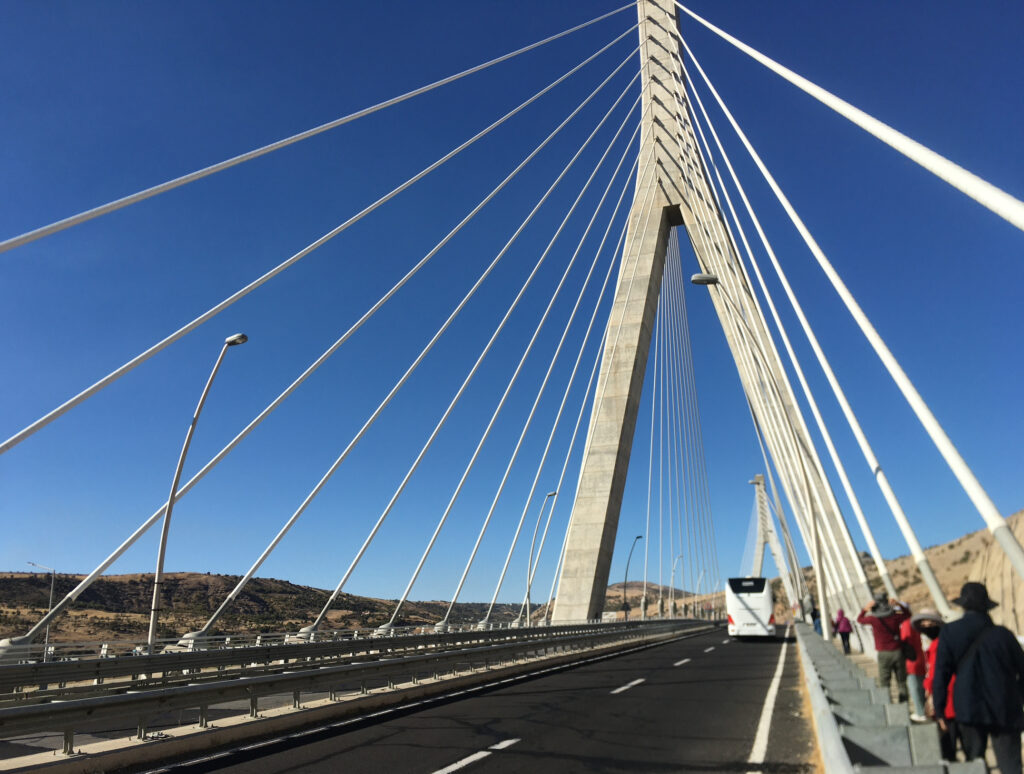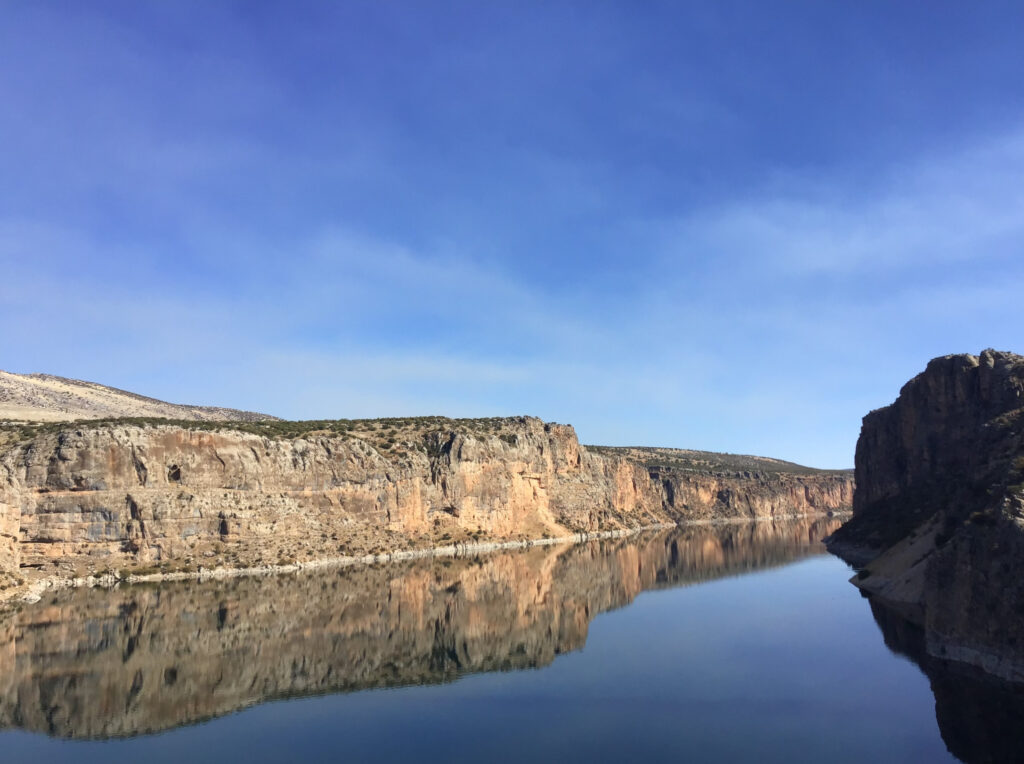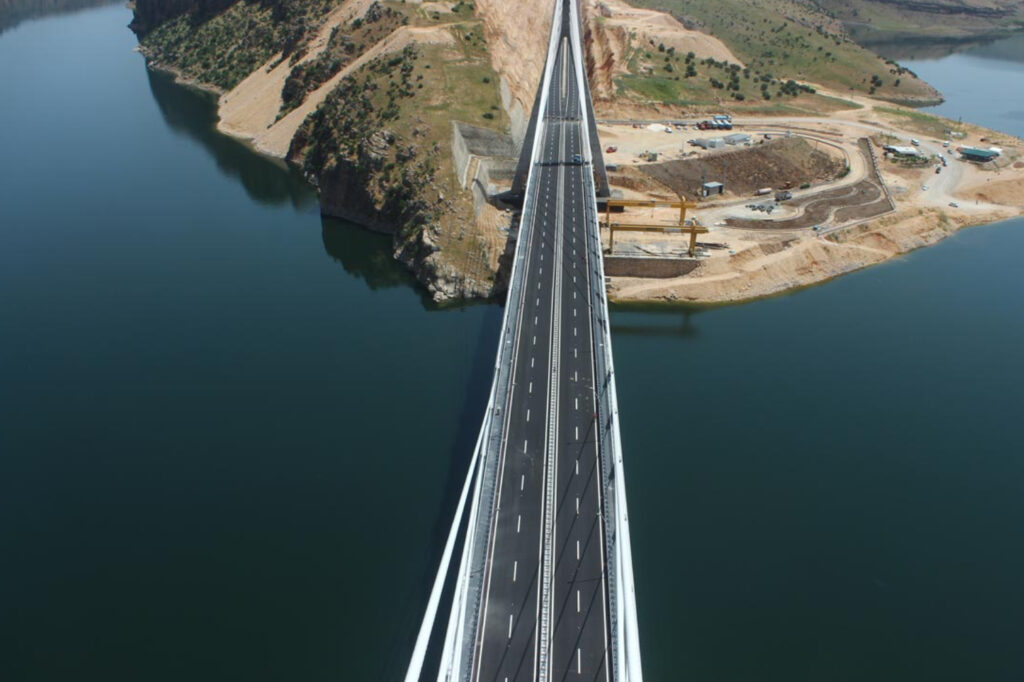ChatGPT:
The Cendere Bridge, also known as the Severan Bridge, is an ancient Roman bridge located near Adıyaman in southeastern Turkey. It spans the Cendere River, a tributary of the Euphrates, and is one of the best-preserved Roman bridges in the world. Built during the reign of Emperor Septimius Severus (193–211 CE), the bridge was constructed as part of a broader infrastructure project in the region, which was an important Roman province at the time.
Origin and History
• The bridge was commissioned by Septimius Severus and dedicated to his family. Inscriptions on the bridge honor Septimius Severus, his wife Julia Domna, and their sons Caracalla and Geta.
• After Caracalla had his brother Geta assassinated in 211 CE, the dedications to Geta were removed, following Caracalla’s orders to erase Geta’s memory (damnatio memoriae).
• It was part of a Roman road system connecting cities and fortifications in the region, which was strategically significant due to its proximity to the Parthian Empire.
Architectural Features
1. Construction Materials: The bridge is built of massive limestone blocks, carefully cut and fitted together without mortar, showcasing advanced Roman engineering techniques.
2. Single Arch Design: The bridge features a single, elegant arch spanning 34.2 meters (112 feet), making it one of the largest single-arch Roman bridges ever built. This design demonstrates the Romans’ mastery of creating durable structures with minimal supports.
3. Supporting Piers: The abutments on both ends are built directly into the bedrock, providing stability against the river’s flow and potential flooding.
4. Decorative Columns: The bridge originally featured four Corinthian columns—two on each side—dedicated to members of Severus’s family. Today, three columns remain standing, while the fourth has been lost over time.
5. Dimensions: The bridge is approximately 120 meters (394 feet) long and 7 meters (23 feet) wide, large enough to accommodate Roman chariots and foot traffic.
Cultural Significance
The Cendere Bridge not only served a practical purpose but also symbolized Roman authority and engineering prowess in the region. It is now a popular historical landmark and part of Turkey’s rich Roman heritage. Despite its age, the bridge has remained remarkably intact, a testament to the durability of Roman construction methods.
Today, it stands as a monument to ancient innovation and continues to draw historians, architects, and travelers from around the world.
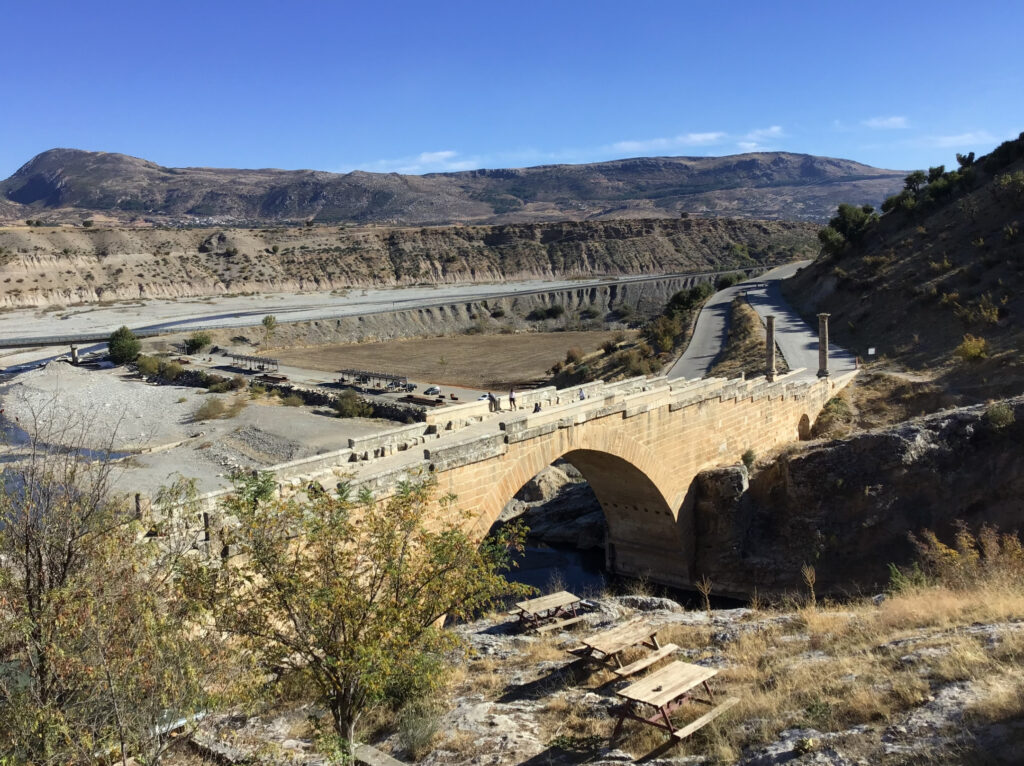
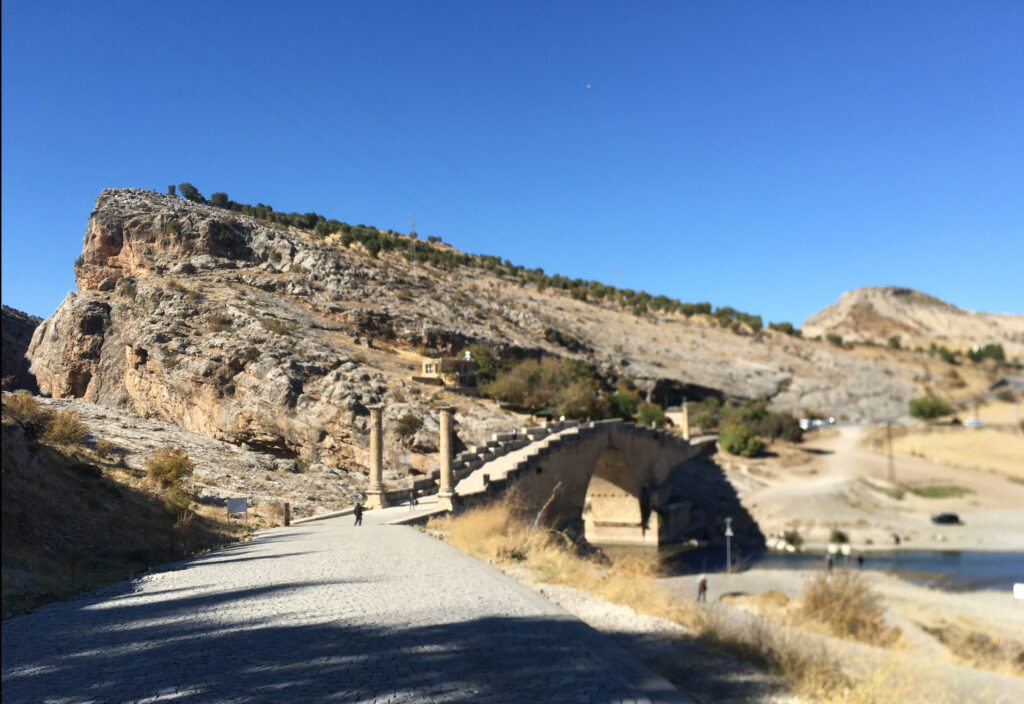
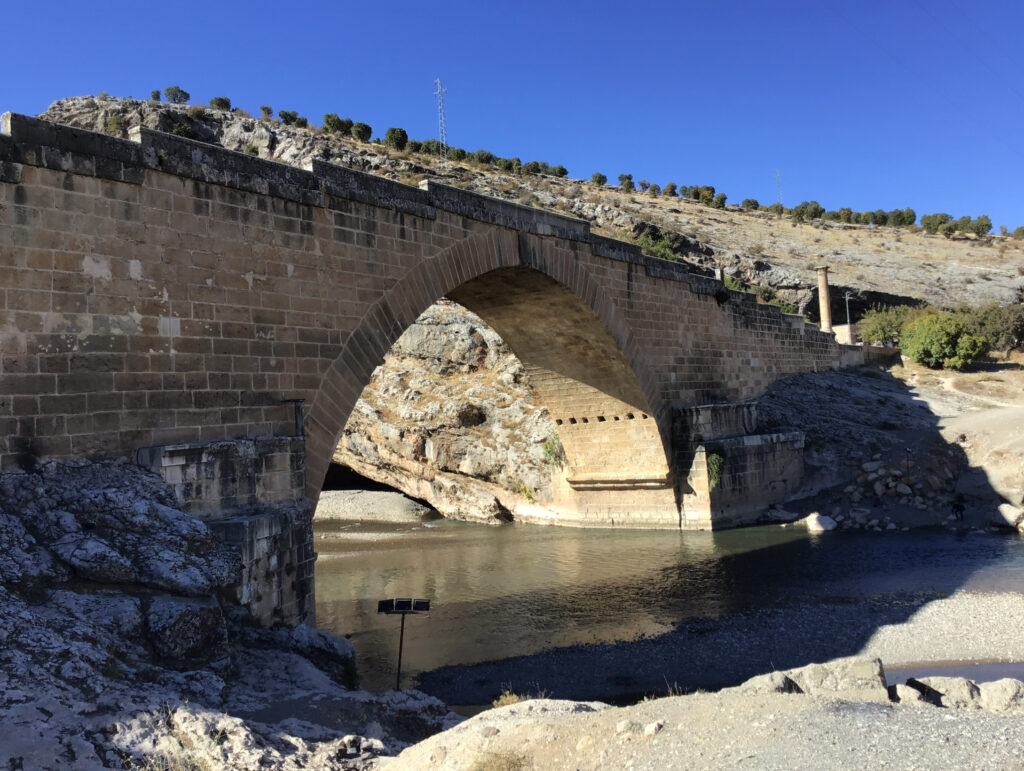
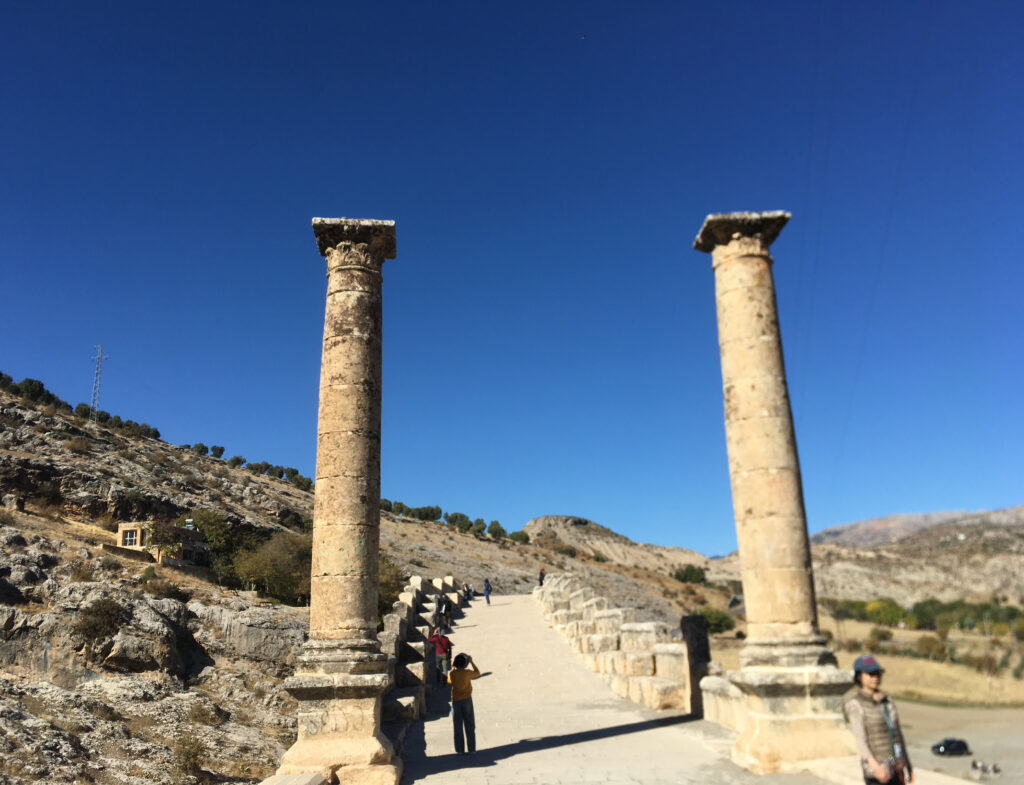
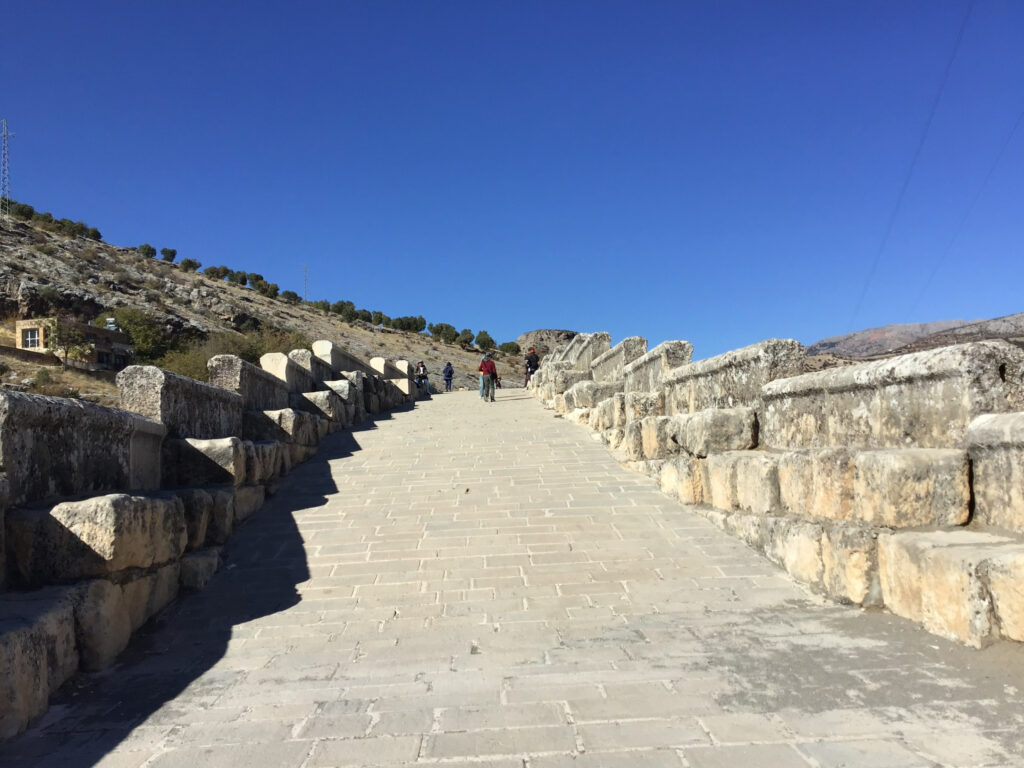
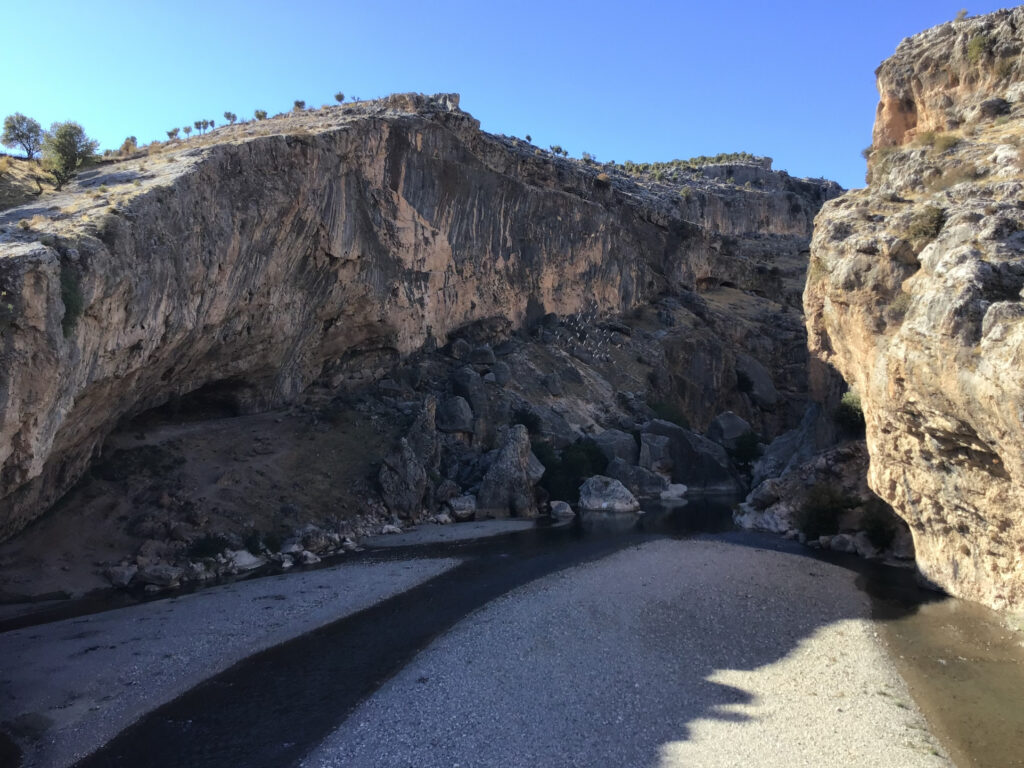
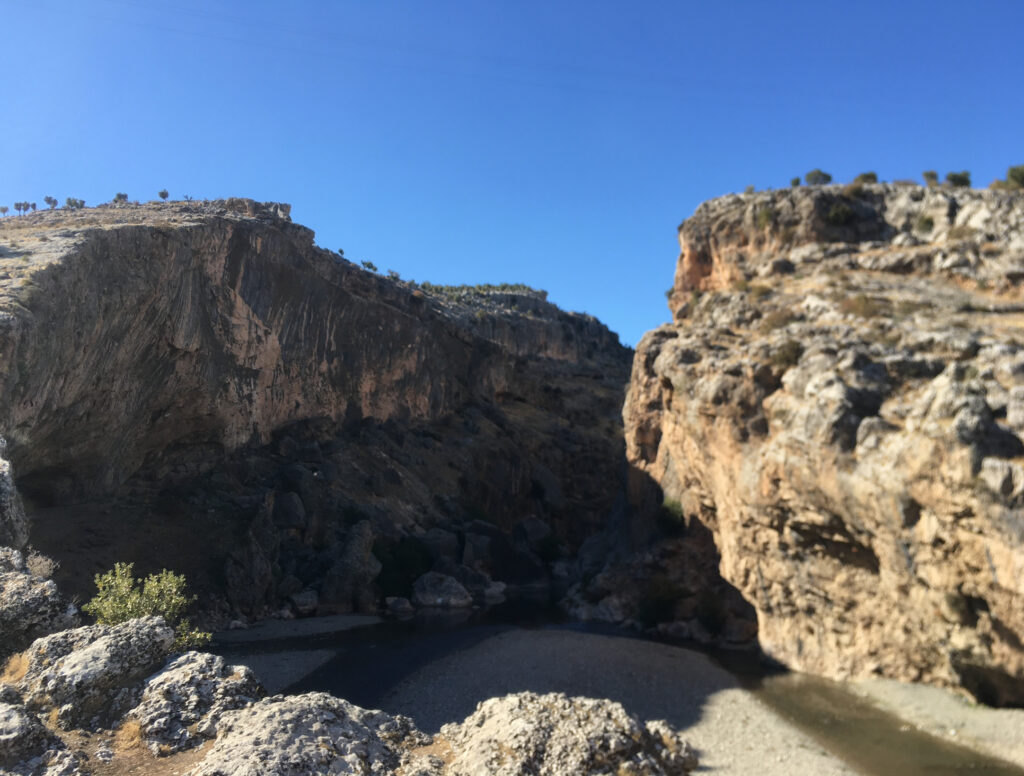
Several major Roman bridges have survived, showcasing the durability and ingenuity of Roman engineering. Here’s a list of some of the most remarkable ones still standing today:
Europe
1. Pont du Gard (France)
• Location: Near Nîmes
• Type: Aqueduct bridge
• Significance: A three-tiered structure, it is one of the best-preserved Roman aqueducts and a UNESCO World Heritage Site.
2. Puente de Alcántara (Spain)
• Location: Alcántara, near Cáceres
• Type: Road bridge
• Significance: Spans the Tagus River and features inscriptions honoring Emperor Trajan. It is a monumental example of Roman bridge engineering.
3. Puente Romano de Mérida (Spain)
• Location: Mérida, Extremadura
• Type: Road bridge
• Significance: Spanning the Guadiana River, it was part of the Roman city of Emerita Augusta and is one of the longest surviving Roman bridges.
4. Ponte Sant’Angelo (Italy)
• Location: Rome
• Type: Road bridge
• Significance: Built by Emperor Hadrian, this bridge crosses the Tiber and is known for its later Baroque statues.
5. Ponte di Tiberio (Italy)
• Location: Rimini
• Type: Road bridge
• Significance: Built under Augustus and completed by Tiberius, it connects Rimini to the Via Emilia.
6. Ponte delle Torri (Italy)
• Location: Spoleto
• Type: Aqueduct bridge
• Significance: Likely of Roman origin, though heavily modified in medieval times, this impressive structure spans a deep valley.
Middle East
7. Cendere Bridge (Turkey)
• Location: Near Adıyaman
• Type: Road bridge
• Significance: One of the largest single-arch Roman bridges still intact.
8. Limyra Bridge (Turkey)
• Location: Near Limyra, Antalya
• Type: Road bridge
• Significance: Features 26 arches and is considered one of the oldest segmental arch bridges.
9. Ain Diwar Bridge (Syria)
• Location: Near Ain Diwar village
• Type: Road bridge
• Significance: Partially preserved, this bridge spans the Tigris and illustrates Roman influence in the region.
Balkans
10. Trajan’s Bridge (Serbia/Romania)
• Location: Danube River
• Type: Road bridge
• Significance: Built by Emperor Trajan, it was the longest Roman bridge ever constructed. Only ruins of the piers remain today.
11. Plaka Bridge (Greece)
• Location: Epirus
• Type: Road bridge
• Significance: While later reconstructed, it retains some Roman architectural influence.
North Africa
12. El Kantara Bridge (Algeria)
• Location: El Kantara, near Batna
• Type: Road bridge
• Significance: Built by the Romans and still in use in a modified form.
13. Al-Baqarah Bridge (Libya)
• Location: Cyrene region
• Type: Road bridge
• Significance: A lesser-known Roman bridge showing evidence of the empire’s reach in North Africa.
Key Features of Roman Bridges
• Arch construction: Most Roman bridges utilize arches for strength and durability.
• Material: Primarily built of stone (limestone or volcanic tuff) and occasionally concrete.
• Longevity: Many are still in use today or have foundations incorporated into modern bridges.
These surviving Roman bridges are enduring symbols of ancient engineering and remain vital cultural and historical landmarks.
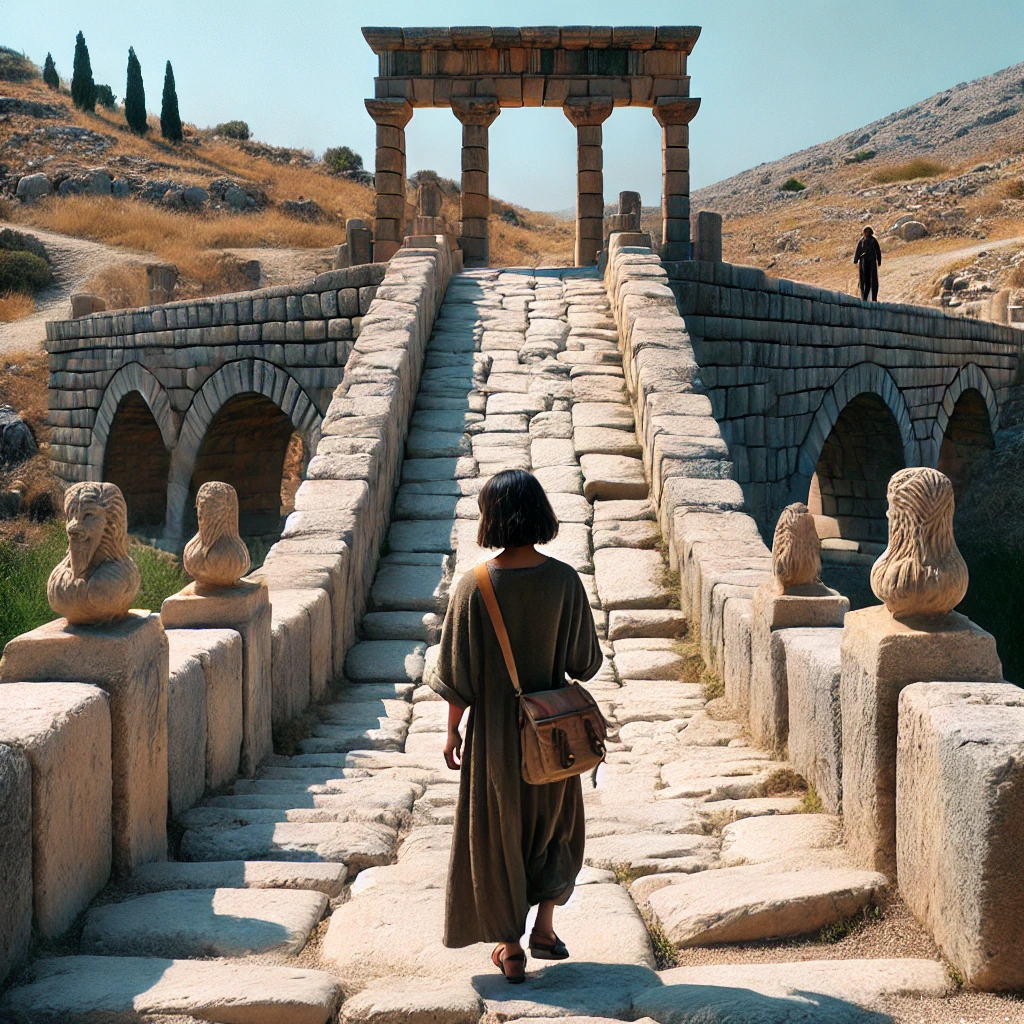
ChatGPT:
Nissibi Bridge (Nissibi Köprüsü) is a modern cable-stayed bridge in southeastern Turkey, spanning the Atatürk Reservoir on the Euphrates River. It connects the provinces of Adıyaman and Şanlıurfa, serving as a vital link between eastern and southeastern Anatolia.
Origin and Construction
• Location: The bridge is located near the Nissibi village in Adıyaman province.
• Construction Start: 2012
• Opening Date: May 21, 2015
• Designed By: The bridge was designed as a cable-stayed structure, symbolizing modern engineering in the region.
• Reason for Construction: The bridge was built to replace ferries and long detours caused by the creation of the Atatürk Reservoir (a consequence of the Atatürk Dam construction). It was needed to facilitate transportation and economic development in the region.
Structure and Features
• Type: Cable-stayed bridge
• Length: 610 meters (2,000 feet)
• Main Span: 400 meters (1,300 feet), making it one of Turkey’s longest cable-stayed bridges.
• Towers: Two tall pylons support the cables.
• Materials: Reinforced concrete and steel
• Design Significance: The bridge is celebrated for its sleek and aesthetic design, blending functionality with regional symbolism.
Functions
1. Transportation: The bridge significantly reduces travel time and connects major cities in southeastern Turkey, such as Adıyaman, Şanlıurfa, and Diyarbakır.
2. Economic Development: By linking agricultural, trade, and industrial hubs, it promotes regional economic integration.
3. Tourism: The bridge provides a scenic route over the Euphrates River, attracting visitors to the surrounding areas.
4. Social Integration: It strengthens ties between communities separated by the reservoir.
The Nissibi Bridge is often referred to as the “Bosphorus of the Southeast,” symbolizing progress and unity in a historically less-developed part of Turkey.
